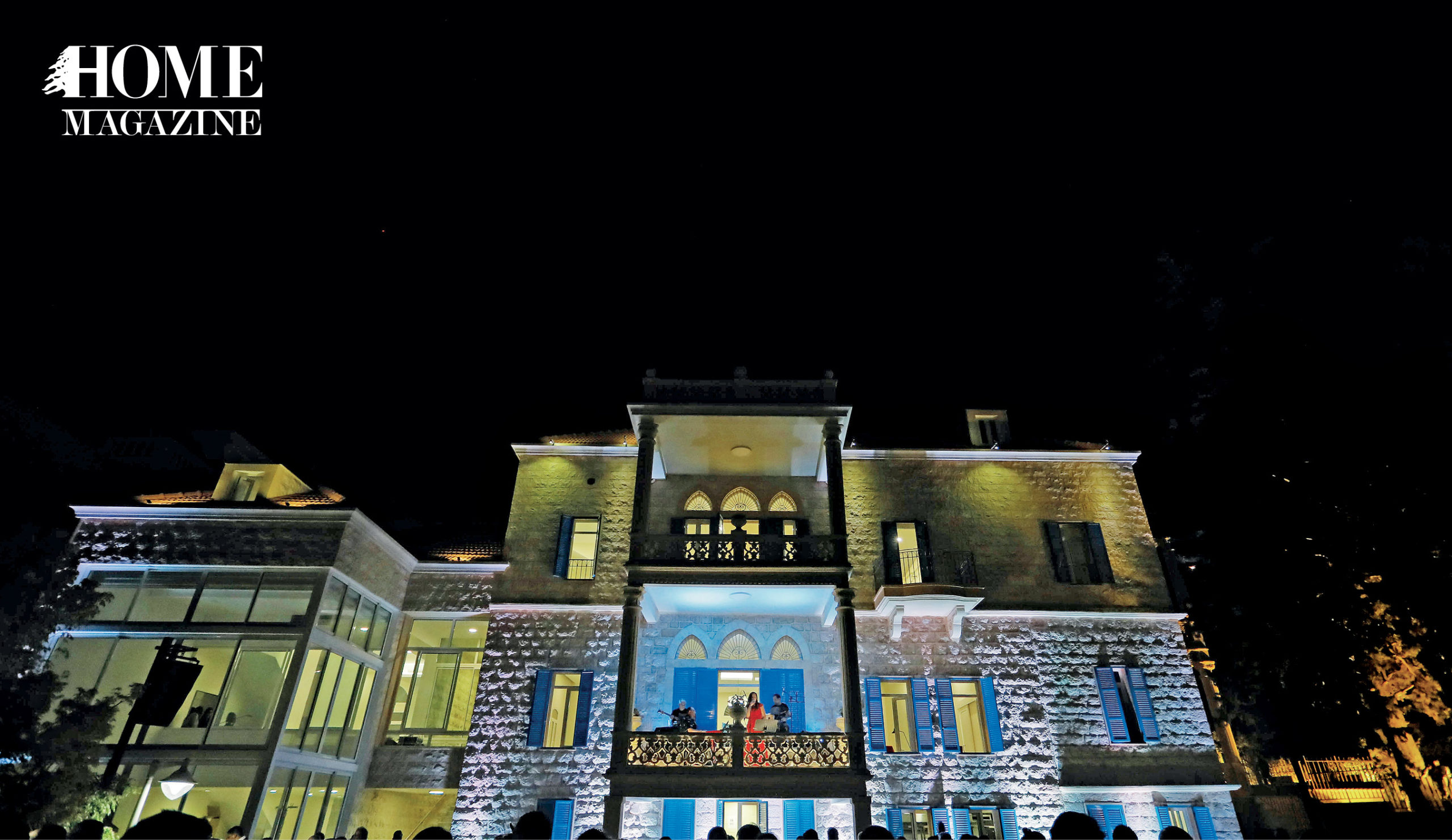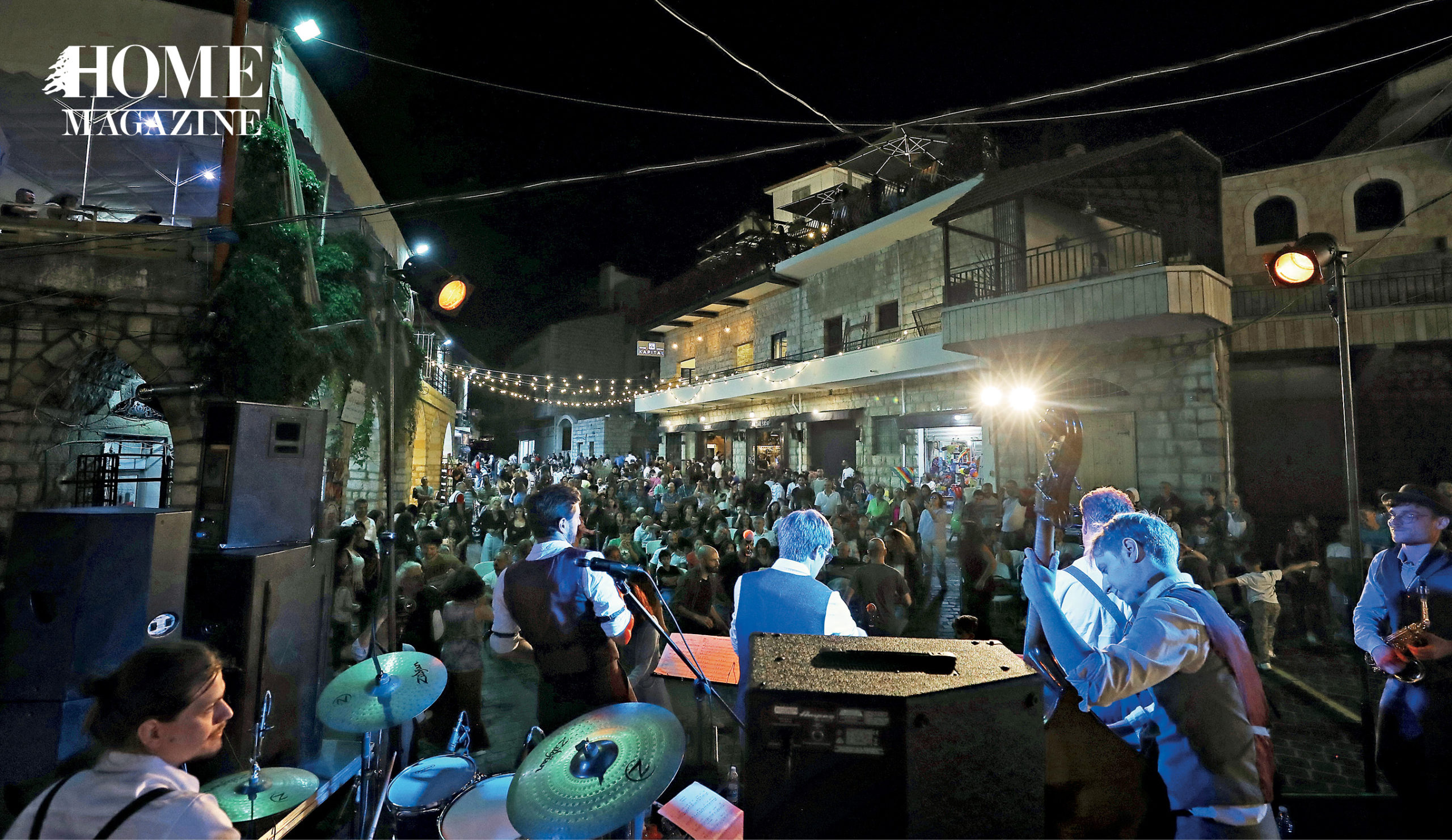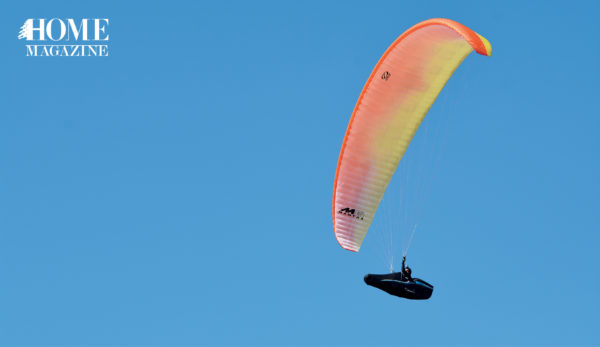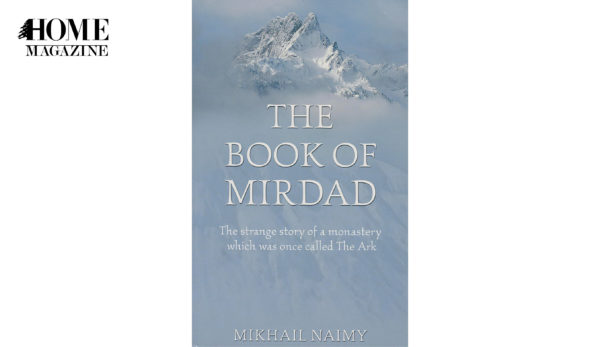Interviewed by Editor-in-Chief, Patricia Bitar Cherfan
It is no wonder the late French poet and politician Alphonse de Lamartine was enraptured by the pristine village of Hammana during the 19th century. Situated at 1,200 meters above sea level, Hammana is in a lush valley that overlooks a dramatic mountain range. As far as the eye can see, the view is simply breathtaking. A popular mountain resort that has managed to preserve its historic identity, it has an abundance of traditional Lebanese red-tiled stone HOMEs, natural water springs and greenery. Two years ago, Hammana welcomed a unique cultural initiative that has injected a new lease of life into the area, drawing visitors from all over the country and overseas.
A house dedicated for artists
In 2017, Robert Maroun Eid, Ph.D. founded Hammana Artist House — a multidisciplinary art residency space with a focus on performing arts. “I bought the original old house which was very small and on one level,” explains Eid. “I then expanded the edifice and added more floors, while preserving the original architecture but with modern fittings.” Set in a sprawling four-story villa, Hammana Artist House is around 1,800 square meters and has eight bedrooms, multiple rooms for different performing arts workshops, and a sweeping patio that has been converted into an outdoor concert hall that can accommodate up to 600 guests. The interior is modern with a minimalist European vintage twist, while its exterior is traditionally Lebanese, that blends in with the adjacent residential HOMEs.
While Eid oversees the operations, performing arts company, Collectif Karhraba, manages it. Founded in 2007 by four French and Lebanese members — Eric Deniaud, Aurelien Zouki, Rima Maroun and Camille Brunel Aoun – the company itself is a collective of artists and technicians from diverse backgrounds and nationalities. Known for artistic productions that have toured locally and internationally, the collective also runs Nehna wel Amar wel Jiran : a free, three-day multidisciplinary festival in Mar Mikhael. The collective’s purist approach to the arts where they eschew commerciality and conceptualizes the arts as a medium for openness and dialogue rather than a commercial undertaking. In that spirit, Hammana Artist House regularly hosts international artists who reside in the space for anywhere from a few days to two weeks in order to meet, exchange ideas and rehearse with Lebanese artists.

Performances at Hammana Artist House take place yearlong; during summers, audiences can expect a plethora of cultura happenings such as classical, jazz, and Arabic music concerts, documentary-screenings, theater performances and a circus show by both Lebanese and foreign talents. Tickets, which normally cost around $20, can be purchased at Antoine bookstores and some performances are even free of charge.
A tribute to his ancestral village
Robert Eid is a successful banker whose studies and later career have taken him to France, Kuwait, Argentina, the United Kingdom, and now Saudi Arabia, where he serves as the managing director and CEO of Arab National Bank, a leading bank in the region.
“After forty years abroad, I started to think about what I was missing and what I wanted to do that didn’t have to do with profit and numbers, which is my profession.”
This initiative was sparked by Eid’s longing for his roots and ancestral village from his maternal side (the Farhat family) combined with a sense of nostalgia and desire to give back to his HOME. “After forty years abroad, I started to think about what I was missing and what I wanted to do that didn’t have to do with profit and numbers, which is my profession,“ Eid reflects. “I felt a desire to go back to my source by rediscovering our modest roots — marked by simplicity and charm. In this context, I wanted to do something in Hammana.” Eid, whose father is from nearby Bikfaya, spent most of his summers as a child in Hammana, which always held a special place in his heart.
Curious about his family ancestry and in a quest to discover more, he did plenty of research and fact-finding, which culminated in his book, Hammana in the Dialogue of Generations.

With the encouragement of Antoine Messara, a sociologist and member of the Constitutional Council in Lebanon, along with the collaboration of historians, Eid published the book in 2015.
Alongside that, Eid was planning his next personal venture in Hammana but was not sure what it would be. “My objective was something that would attract people to this village. I had proposals from residents of Hammana: to build a nursing HOME, a tailoring and embroidery workshop, a facility for scouts, a branch of the Lebanese National Conservatory of Music and various other ideas. I was open to suggestions but, ultimately I wanted to do something more unique and that could be a point of attraction for everyone,” says Eid.
Uniting people through performing arts
Eid felt that art has the power to unite people from all backgrounds and interests, and he wanted people from diverse places to make Hammana their destination for culture and pleasure. “There is a French saying, ‘La musique adoucit les moeurs.’ Art or music softens the habits of the wild. In these times of violence and aggression, the arts have a peaceful effect,” says Eid poignantly.
Furthermore, as someone whose livelihood was always in banking, Eid says his mindset had always been geared to think about profit. All of his professional decisions had to translate to a return on investment.
“‘La musique adoucit les moeurs.’ Art or music softens the habits of the wild.”
“There was a need somewhere deep in my heart to compensate for this,” confesses Eid. Over time he craved to give back without expecting anything in return — a form of social responsibility. “In the arts, the return on investment is negative; it will never make money. It is a loss-making machine. I am not talking about big entertainers, of course. Unless you become very commercial and sell your soul, you can’t make money generally speaking,” he continues.
For Eid, Hammana Artist House is about offering art in a pure form — the kind of performances found in cultural institutes worldwide, where the objective is to educate, entertain, and inspire. Once he set his sights on developing the center, Eid visited cultural centers throughout Lebanon. He immediately clicked with Collectif Kahraba. “They are very rigorous and a very dedicated team,” he comments.
On the downside, Hammana Artist House’s main challenge continues to be the funding. The robust team at Collectif Kahraba works closely with embassies and cultural centers (both in Lebanon and abroad) to obtain grants for the residencies and performances. Other means of funding are through ticket sales, inviting food and beverage outlets to sell goods during the concerts, and renting out the premises for Lebanese university students to do residency projects.

However, with all these initiatives combined, it covers roughly 30 percent of overhead costs, leaving Eid to fill the gap. “Slowly but surely, we are getting there — perfecting our model to get bigger grants and trying new ways to self-finance,” says Eid with optimism.
Developing tourism projects
Since the launch two years ago, the village has been abuzz with many new restaurants and pubs.
One of them is a cozy pub, Drink on the Side, situated in the historic Hammana Souk in the charming pedestrian friendly cobblestone square; the other is the nearby Cherrylane — another project initiated by Eid — a spacious eatery that serves as a coffee shop,fine dining restaurant, and a lounge with weekly live jazz music. HOME was given a tour of Cherrylane, which has impressive panoramic views of Hammana and from its terrace seating you get the best views of the stunning and well-preserved 700-year-old Gothic style Mezher palace, which once was the residence of the Druze governors of the district, and the place where Alphonse de Lamartine previously stayed.
Eid is also planning to create a luxury Eco Resort near the village set in a beautiful landscape.
Life lessons: learning from ancestors
What about the Lebanese diaspora scattered around the world? “Some of them went far away, geographically and mentally,” he reflects. “Especially the Lebanese that immigrated to Latin America. Five years ago, we held an official gathering inviting all the expats from Hammana and managed to receive 50 people, who came to see their ancestral village for the very first time. They were clearly enamored by Lebanon and it’s very emotional but what does this translate for Lebanon afterwards?” Eid asks rhetorically. “Not too much,” he continues. “But this makes you imagine and dream about how they left Lebanon and what hardships they faced to start a new life.” Eid then tells HOME a moving story about his maternal uncle, Joseph Farhat, who left Lebanon for Argentina:
“My maternal grandfather from Hammana was born poor and later became very wealthy, but then fell on hard times toward the end. His son, Joseph, was a second-year law student when the family lost its fortune, forcing the student to terminate his studies. Joseph decided to go to Argentina to try his luck there instead. His father handed him two Persian carpets that Joseph could sell in order to begin his new life in the Americas. Then his father booked him a seat in the fourth class, or the cheapest compartment on the ship.

“It was just after WWI and this ship boarding for Argentina happened to have more women than men travelling. The journey would take three months. Every night, the ship would host a lavish dinner followed by dancing for first-class passengers. However, there weren’t enough male dance partners for the ladies travelling solo. The captain, noticing Joseph’s brooding good looks, upgraded him to first class, so he could join the ladies for dinner and dancing.
“Delighted with this incentive, Joseph took his ballroom dancing role seriously and became popular with the wealthy women on board. One particularly affluent lady offered to buy one of the Persian carpets, which gave him the capital to start his new life and business in Buenos Aires.
“Many decades later (in the early 1980s) while I was studying for my Ph.D. in France, I met my future wife, who is Argentinian. Together, we traveled to Argentina, and I tried to locate my uncle whom I knew nothing about, except that he renamed himself Jose. My wife opens the phone directory and finds four people named Jose Farhat. She attempts to call each one. When she gets to the third one she pursues a long conversation in Spanish and it turned out to be my uncle! We arrange to meet and as soon as he sees me, he is shocked that I was underdressed in my jeans and shirt and not wearing a belt.
“‘Donde esta tu cinturón?’ Jose asks with a serious face. In his days, men had to be smartly dressed for all occasions. Later on, my uncle tells me the story of the carpet. I meet his daughters (my cousins) and the rest of the family, and we became great friends over the years.
“He passed away 10 years ago at the age of 99. Six years ago, I visited his daughters in Buenos Aires, and they were emptying the family HOME and dividing the furniture amongst them. When they got to the carpet, they told me, ‘Our father brought two antique carpets from Lebanon. He sold one and this one remained here but we have no place for it. Would you like to have it?’ I was so moved to see this legendary carpet as it symbolized everything that our brave ancestors had to endure — leaving their HOMEs, risking their lives, and gambling with their luck.”
“After wrapping up his story, Eid pauses before picking up again: “You know, we often hear about the successful Lebanese, like Carlos Slim, but what about the thousands of Lebanese who did not make it big abroad? They are heroes, too. This is why I was so interested in learning the history of the people in this village. This sparked my book and also made me want to invest in the village and contribute to bring back its previous glory. When we hold our concerts at the Hammana Artist House, people are so happy and festive and the locals thank me afterwards. This, for me, is the best feeling,” he smiles.
Eid’s story is one of many examples of the Lebanese who have done what matters to them most, to give back to their HOME.

































